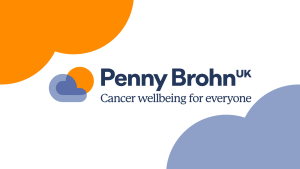Sarcoma Awareness Month - July
According to research undertaken by the charity, Sarcoma UK, awareness of sarcoma in the UK is very low. 75% of people don’t know or aren’t sure what sarcoma is. July is Sarcoma Awareness Month, we’ll be sharing information about this cancer as well as support to help you live well with cancer.
Sarcoma cancers – understanding what they are
Sarcoma can occur in various locations in your body. It can begin in your bones or soft connective tissue. There are up to 100 types of sub-types of sarcoma. But the three main categories of sarcomas are:
- Bone sarcoma, which start in the bones (not to be confused with bone cancer)
- Soft tissue sarcoma, they can affect any part of the body; they develop in supporting or connective tissue such as the muscle, nerves, fatty tissue, and blood vessels
- Sarcomas can also develop in the stomach, intestines and behind the abdomen (retroperitoneal sarcomas), female reproductive system (gynaecological sarcomas) and gastrointestinal (GI) tract. This sarcoma is known as GIST
We’ll also look at:
- Risk factors
- Getting diagnosed and treatment
- How we can help you live well and manage your symptoms and side effects
Sarcomas are rare, which is why understanding of this type of cancer is low. It’s not clear what causes soft tissue sarcoma.
In general, cancer occurs when cells develop errors (mutations) in their DNA. The errors make cells grow and divide out of control. The accumulating abnormal cells form a tumour that can grow to invade nearby structures and the abnormal cells can spread to other parts of the body (1). The type of cell that develops the genetic mutation determines what type of soft tissue sarcoma you have. For example, angiosarcoma begins in the lining of blood vessels, while liposarcoma arises from fat cells.
Risk factors of sarcoma
- Inherited syndromes. A risk of soft tissue sarcoma can be inherited from your parents. Genetic syndromes that increase your risk include hereditary retinoblastoma, Li-Fraumeni syndrome, familial adenomatous polyposis, neurofibromatosis, tuberous sclerosis and Werner syndrome.
- Chemical exposure. Being exposed to certain chemicals, such as herbicides, arsenic and dioxin, may increase the risk of soft tissue sarcomas.
- Radiation exposure. Previous radiation treatment for other cancers can increase the risk of soft tissue sarcomas.
- Chronic swelling. Such as lymphoedema.
- Exposure to viruses. The virus called human herpesvirus 8 can increase the risk of a type of sarcoma called Kaposi’s sarcoma in people with weakened immune systems.
Finding out you have sarcoma
Sarcomas are usually found by the person themselves as they appear as a lump on their leg, trunk or arm. In lesser circumstances they can be found during a routine exam or operation. The earlier sarcoma is diagnosed the better chance there is of treating it and ensuring it hasn’t spread to neighbouring areas.
Soft cell sarcomas often have no symptoms in the early stages but they can cause symptoms as they grow bigger or spread.
Symptoms include:
- A swelling under the skin that may cause a painless lump that can’t easily be moved around
- Swelling the abdomen which could cause pain, constipation, or a feeling of being full
- Swelling near the lungs that cause breathlessness or a cough
You should see you GP if you find a lump, particularly one that has increased with size.
Bone sarcoma symptoms can vary depending on size and location of the tumour. Symptoms can include:
- Bone pain, particularly at night
- A mass or swelling
- Restricted movement in the joint
A specialist doctor will diagnose sarcoma through a series of tests. These may include:
- Clinical examination – looking at and feeling any lump
- A scan – taking pictures of the inside of the body using ultrasound, x-ray, CT, EUS, PET or MRI
- A biopsy – taking and testing a tissue sample
- A bone scan – to investigate primary bone sarcomas
Treating sarcoma
If you’ve been diagnosed with sarcoma, you should be referred to a specialist sarcoma team for diagnosis and treatment of this kind of cancer.
Your case will be managed by a team of experts from a wide range of health care professions called a multidisciplinary team (MDT).
Your MDT will support you throughout your treatment to ensure you get the right treatment as and when you need it. Treatment can include:
- Surgery. Often the first point of treatment which can then be combined with chemotherapy or radiotherapy.
- Radiotherapy. When used before surgery it aims to reduce the size of the tumour so it can be operated on and removed. Radiotherapy is also very effective when given after surgery. This is particularly so for intermediate and high-grade tumours and when the margins (the normal tissue around the tumour) are quite close. In this case, the aim is to kill off any local cancer cells which remain in the area of the tumour.
- Chemotherapy. This treatment uses anti-cancer drugs to destroy cancer cells. Its main use is in treating bone sarcomas, usually before or after surgery. Not all soft tissue sarcomas respond well to this type of treatment; however, it is used on the sub-types that do respond to chemotherapy.
A word about clinical trials
You may be offered an opportunity to take part in a study to investigate new diagnosis methods, drugs or treatments. Some studies also look at the care and wellbeing of people with cancer. Your doctor or nurse can give you more information on opportunities for you to take part in a clinical trial.
Denise’s experience of taking part in clinical trials for the treatment of liver and breast cancer.
Living with cancer
After receiving your diagnosis, you should receive specialist support from your MDT about your treatment plan. However, you may feel like you need additional emotional and psychological support as well as self-care techniques to help you be in the best place possible for your treatment.
We provide integrative care because we believe that a person with cancer needs to be treated holistically, taking into account your mind, spirit, emotions and body. Our support includes nutrition, exercise, mindfulness and meditation, complementary therapies and relaxation techniques.
Join an introductory session with Penny Brohn UK
Welcome to Penny Brohn UK
Welcome to Penny Brohn UK
Welcome to Penny Brohn UK
Useful reading and further support
What is a multi disciplinary team for sarcoma? – Sarcoma UK
Understanding the stage and grade of sarcoma – Sarcoma UK
Patient Guides: a list of information leaflets from the UK’s leading bone and soft cell sarcoma charity – Sarcoma UK
References
(1) Symptoms and causes of sarcoma: https://www.mayoclinic.org/diseases-conditions/sarcoma/symptoms-causes/syc-20351048









